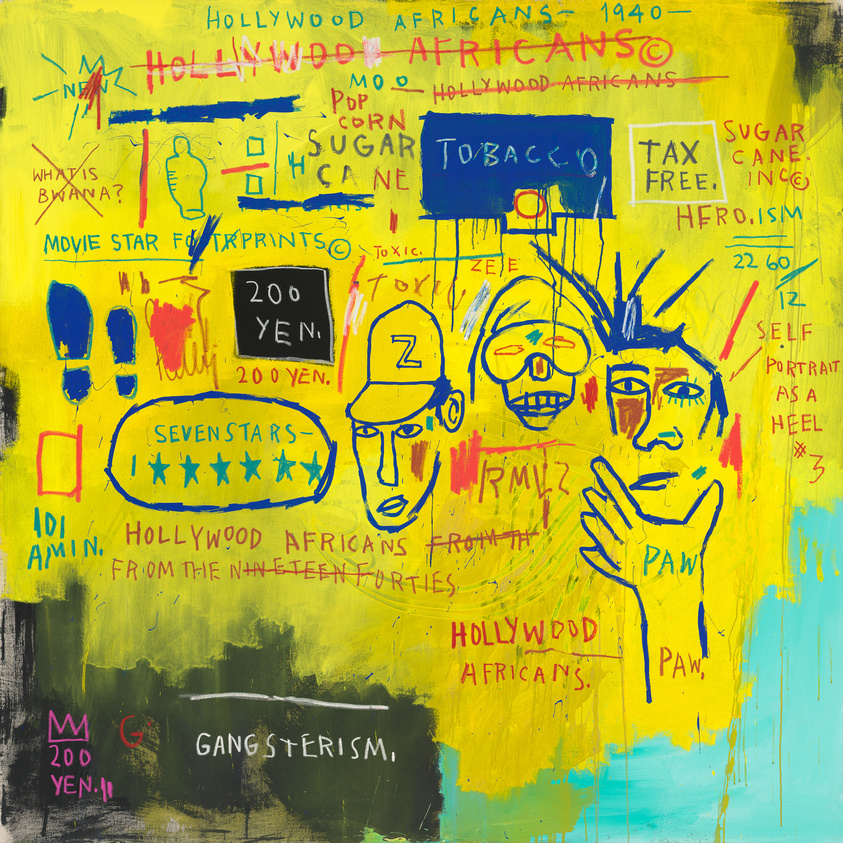Hollywood Africans is one of a series of Jean-Michel Basquiat’s paintings that feature images and texts relating to stereotypes of African Americans in the entertainment industry. It was painted while Basquiat was on an extended visit to Los Angeles, California, in 1983. Several of the work’s notations are autobiographical: the trio of figures on the right depicts the artist with the rap musician Rammellzee and the painter Toxic, who had traveled with him from New York, and he includes the digits of his birth date: 12, 22, and 60. Other notations are historical: phrases such as “Sugar Cane,” “Tobacco,” “Gangsterism,” and “What is Bwana?” allude to the limited roles available to black actors in old Hollywood movies. The notion of exclusion or excision is reiterated in the way that Basquiat often crossed out words or phrases in his works. The technique, he explained, was actually meant to direct attention to them: “I cross out words so you will see them more; the fact that they are obscured makes you want to read them.”
On view
Floor 7
Date
1983
Classification
Paintings
Medium
Acrylic and oil stick on canvas
Dimensions
Overall: 84 1/16 × 84in. (213.5 × 213.4 cm)
Accession number
84.23
Credit line
Whitney Museum of American Art, New York; gift of Douglas S. Cramer
Rights and reproductions
© The Estate of Jean-Michel Basquiat. Licensed by Artestar, New York
Audio
-
descripción verbal: Jean-Michel Basquiat, Los africanos de Hollywood, 1983
In “Untitled” (America) (Spanish)
0:00
Descripción verbal: Jean-Michel Basquiat, Los africanos de Hollywood, 1983
0:00
Narrador: Los africanos de Hollywood, de 1983, es una obra realizada con acrílico y óleo sobre lienzo. Con unas dimensiones de poco más de 2 metros de alto por 2 metros de ancho, Jean-Michel Basquiat pintó esta obra durante una prolongada estancia en Los Ángeles, California. La obra presenta un fondo predominantemente amarillo y difuminado, con un texto denso y algunos dibujos de líneas. En el centro del lienzo, Basquiat ha pintado un retrato esquemático de sí mismo, así como de sus amigos y compañeros artistas y músicos Toxic y Rammellzee, que le habían acompañado a la costa oeste. Basquiat es reconocible en el extremo derecho por sus rastas; cerca de él están inscritos los números 12, 22 y 60, la fecha de su nacimiento. La mano incorpórea de Basquiat se ahueca sobre su rostro y ha escrito la palabra “pata” dos veces, en la mano y en la muñeca, respectivamente. A la derecha, las palabras "AUTORRETRATO COMO UN TALÓN N.º 3" ocupan un amplio margen. Los rostros de Basquiat, Toxic y Rammellzee están encerrados en una cuadrícula de palabras escritas a mano en varios tamaños y colores. Basquiat ha escrito la mayor parte del texto en colores rojo brillante, marrón cálido y cian, con algunos trazos en blanco y negro tachados o enmarcados. El azul cobalto perfila los retratos, rellena los espacios negativos y las formas negativas, y rodea las imágenes.
El fondo amarillo es vibrante y está lleno de formas orgánicas, tanto del texto escrito a mano como de las líneas y gotas que dan textura al fondo. Una figura que se asemeja a una estatuilla de los premios Óscar sin su base flota sobre bocetos de huellas de zapatos y estrellas que parecen un sistema de clasificación etiquetado como “siete estrellas”. Frases como “Caña de azúcar”, “Tabaco”, “Gangsterismo” y “¿Qué es Bwana?” aluden a los papeles limitados que tenían los actores afroamericanos en las antiguas películas de Hollywood. Las palabras “Hollywood Africans” [Los africanos de Hollywood] están escritas cuatro veces de forma intermitente de arriba abajo. Símbolos de copyright aparecen después de tres frases de izquierda a derecha.
El fondo está compuesto por una variedad de texturas. En los cuadrantes inferiores de la pintura, quedan fragmentos de lienzo en bruto en los bordes, bajo franjas de color negro calcáreo y verde azulado suave. Entre las finas capas de pintura que gotean el lienzo, un arco de líneas dejadas por los dedos se extiende por el centro, bajo los retratos. La distintiva firma en forma de corona de Basquiat aparece en magenta en la parte inferior izquierda.
-
Jean-Michel Basquiat, Los africanos de Hollywood, 1983
In “Untitled” (America) (Kids, Spanish)
0:00
Jean-Michel Basquiat, Los africanos de Hollywood, 1983
0:00
Narrador: Observa atentamente esta obra de Basquiat.¿Qué te llama la atención de la composición? Quizás te des cuenta de que hay muchas capas. Capas de color, capas de palabras. ¿Alguna vez has visto una pared en la calle con muchos carteles y grafitis superpuestos de esta manera? Basquiat comenzó su carrera como artista de grafitis en la ciudad de Nueva York. Y, cuando pintaba sobre lienzo, sus obras seguían pareciendo arte callejero.
Quizás hayas notado que Basquiat tachó varias palabras. Lo hizo para llamar nuestra atención. Es como si alguien te dijera “¡no mires ahí!” y entonces no puedes evitar mirar. Una de las frases que tachó fue: Hollywood Africans [Los africanos de Hollywood], el título de la obra. La pintó mientras estaba en Los Ángeles con unos amigos, una experiencia que lo llevó a pensar en las limitaciones a las que estaban sometidas las personas afroamericanas para interpretar ciertos personajes en las películas. Algunas de las frases del lienzo provienen de esos estereotipos. También etiquetó su propio autorretrato y las fotos de sus amigos, los raperos Toxic y Rammellzee.
-
0:00
Jean-Michel Basquiat, Hollywood Africans, 1983
0:00
Narrator: Take a close look at this work by Basquiat. What do you notice about the composition? One thing you might see is lots of layers. Layers of color, layers of words. Have you ever noticed a wall on the city street with lots of posters and graffiti, layered together like this? Basquiat got his start as a graffiti artist in New York City. And when he made paintings on canvas, they still looked like art made on the street.
Maybe you’ve noticed that Basquiat crossed a bunch of words out. He did this to call attention to them. Like someone saying “don’t look at that!” and so you can’t help looking. One of the phrases he crossed out is Hollywood Africans, the title of the work. He made the painting while he was in Los Angeles with some friends – an experience that got him thinking about how Black people were limited to playing certain characters in movies. Some of the phrases on the canvas come from those stereotypes. He’s also labeled his own self-portrait, and the pictures of his friends, the rappers Toxic and Rammellzee.
-
0:00
Verbal Description: Jean-Michel Basquiat, Hollywood Africans, 1983
0:00
Narrator: Hollywood Africans from 1983 is an acrylic and oil stick painting on canvas. Measuring just over 7 feet tall by 7 feet wide, Jean-Michel Basquiat painted this work on an extended visit to Los Angeles, California. Overall, the painting has a predominantly yellow, washy background with dense text and a few line drawings throughout. At the center of the canvas, Basquiat has painted a schematic portrait of himself as well as his friends and fellow artist-musicians, Toxic and Rammellzee, who had accompanied him to the West Coast. Basquiat is recognizable at the far right by his dreadlocks; the numerals “12,” “22,” “60”—the date of his birth—are inscribed nearby. Basquiat’s disembodied hand cups his face, and he has written the word “paw” twice, on his hand and on his wrist, respectively. To the right the words “SELF PORTRAIT AS A HEEL #3” fill a broad margin. Basquiat, Toxic, and Rammellzee’s faces are locked in a grid of handwritten words in various sizes and colors. Basquiat has written the majority of the text in bright red, warm brown, and cyan colors with occasional white and black crossed out or boxed in. Cobalt blue outlines the portraits, fills negative spaces and shapes, and encircles images.
The yellow background is vibrant and filled with the organic shapes of both hand-written text and the lines and drips that texturize the background. A figure resembling an Oscar award statue without its base hovers above sketches of shoe prints and stars resembling a rating system labeled “seven stars.” Phrases such as “Sugar Cane,” “Tobacco,” “Gangsterism,” and “What is Bwana?” allude to the limited roles available to black actors in old Hollywood movies. The words “Hollywood Africans” are written four times intermittently from top to bottom. Copyright symbols appear after three phrases from left to right.
The background consists of a range of textures. In the lower quadrants of the painting, slivers of raw canvas remain at the edges of the painting under swathes of chalky black and soft teal. Between thin layers of paint that dripped down the canvas, an arc of lines left by fingers drags across the center under the portraits. Basquiat’s distinctive crown signature appears in magenta on the bottom left.
-
0:00
Jean-Michel Basquiat, Hollywood Africans, 1983
0:00
Thelma Golden: Hollywood Africans is somewhat of a typical Basquiat painting, because the first thing you see is that it’s covered with words. And the words have a hierarchy: some of them are circled, some of them are crossed out, some of them are highlighted in different colors, but really the most important thing is you see the words.
Scott Rothkopf: Thelma Golden is the director and chief curator of the Studio Museum in Harlem.
Thelma Golden: At the core of this painting is a self-portrait of Basquiat himself and his two friends, Toxic and Ramellzee, who were also artists of that era who had traveled with him to L.A., so in many ways, the painting is a document of this trip that they made out to California, encountering out there both the art world as well as the music world, that they were hanging out in. I think it’s obvious to look at Hollywood Africans as a critique of the way in which black people have been portrayed in Hollywood film. But I think, given when this painting was made in 1983, Basquiat was making a more complicated comment about the ideas of freedom and ownership as it related to the Hollywood arena. I often think of this painting, Hollywood Africans, as referring not just to those portrayals of Africa, the stereotypes of Africa in films like Tarzan and the way in which Africans were portrayed, but more a contemporary comment about the role of black people in the film world, right? That they are stars, but yet still, culture defines the way in which they’re understood. So it, to me, seems often like he wasn’t just making a comment about the past, but he was really making—not a comment or a critique—but a statement about the present.
-
0:00
Jean-Michel Basquiat, Hollywood Africans, 1983
0:00
Thelma Golden: Hollywood Africans is somewhat of a typical Basquiat painting, because the first thing you see is that it’s covered with words. And the words have a hierarchy: some of them are circled, some of them are crossed out, some of them are highlighted in different colors, but really the most important thing is you see the words.
Adam Weinberg: Thelma Golden is director and chief curator of the Studio Museum in Harlem.
Thelma Golden: At the core of this painting is a self-portrait of Basquiat himself and his two friends, Toxic and Ramellzee, who were also artists of that era who had traveled with him to L.A., so in many ways, the painting is a document of this trip that they made out to California, encountering out there both the art world as well as the music world, that they were hanging out in. I think it’s obvious to look at Hollywood Africans as a critique of the way in which black people have been portrayed in Hollywood film.
But I think, given when this painting was made in 1983, Basquiat was making a more complicated comment about the ideas of freedom and ownership as it related to the Hollywood arena. I often think of this painting, Hollywood Africans, as referring not just to those portrayals of Africa, the stereotypes of Africa in films like Tarzan and the way in which Africans were portrayed, but more a contemporary comment about the role of black people in the film world, right? That they are stars, but yet still, culture defines the way in which they’re understood. So it, to me, seems often like he wasn’t just making a comment about the past, but he was really making—not a comment or a critique—but a statement about the present.
Exhibitions
-
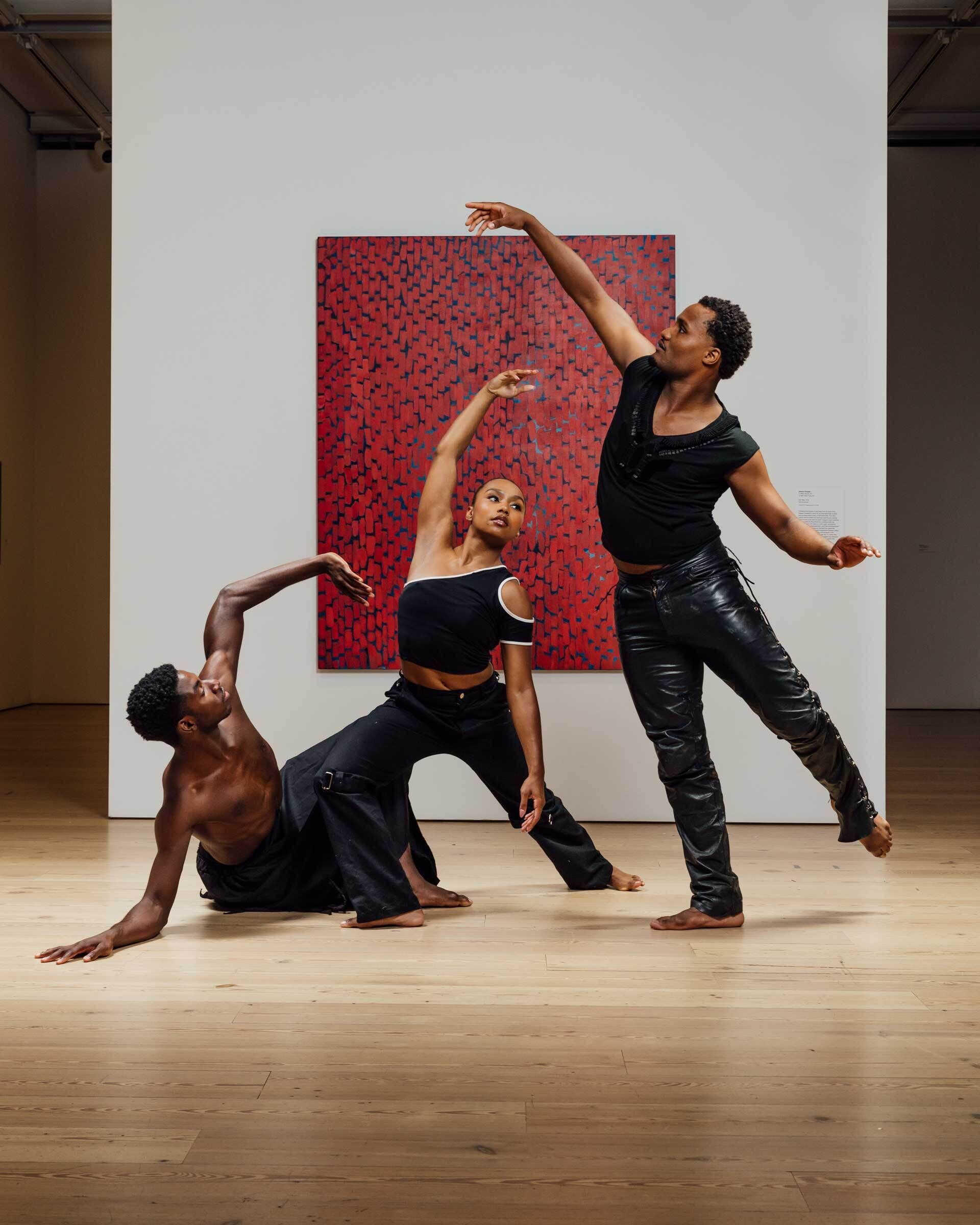
Edges of Ailey
Sept 25, 2024–Feb 9, 2025
-
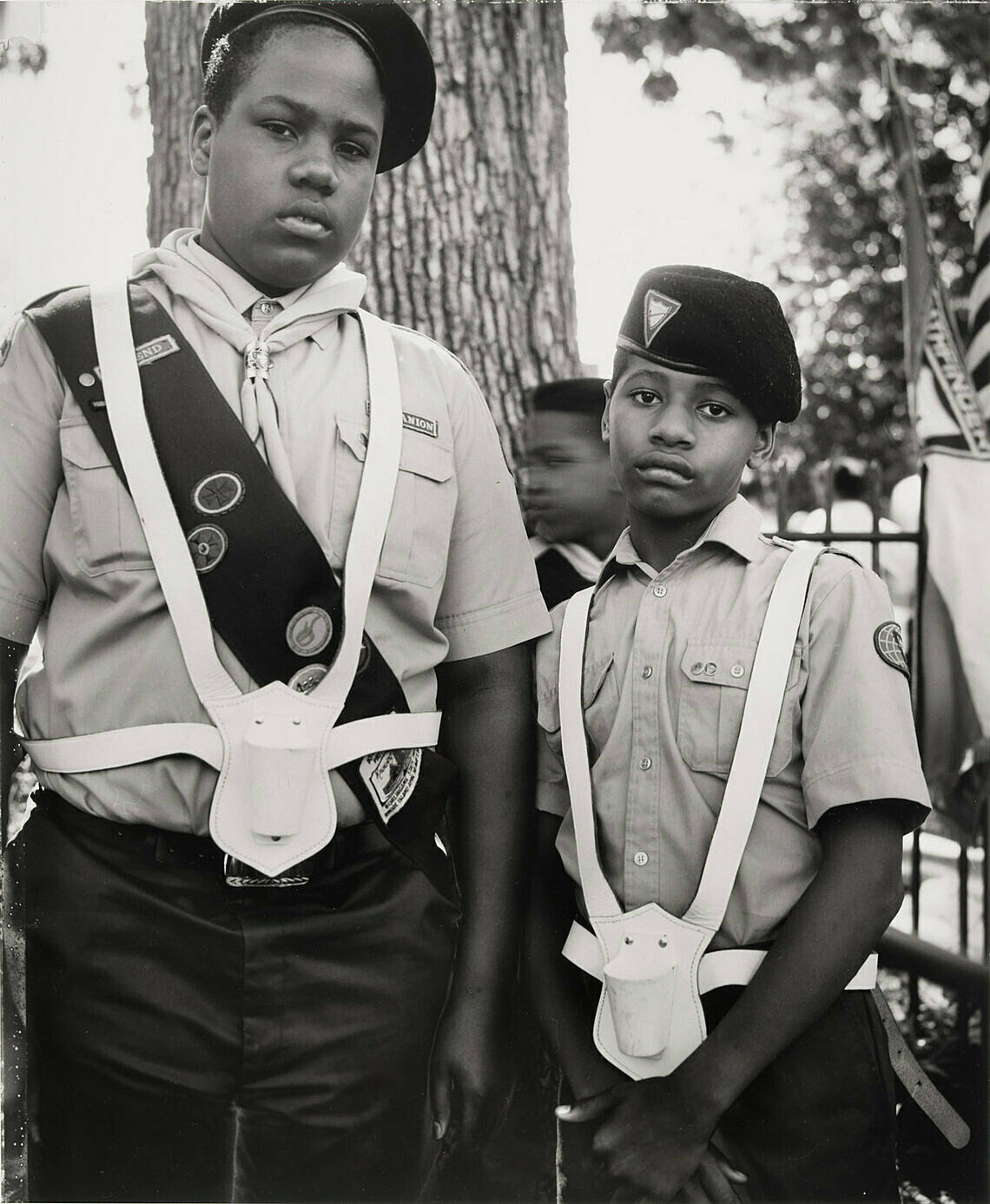
Human Interest: Portraits from the Whitney’s Collection
Apr 2, 2016–Apr 2, 2017
-

America Is Hard to See
May 1–Sept 27, 2015
-
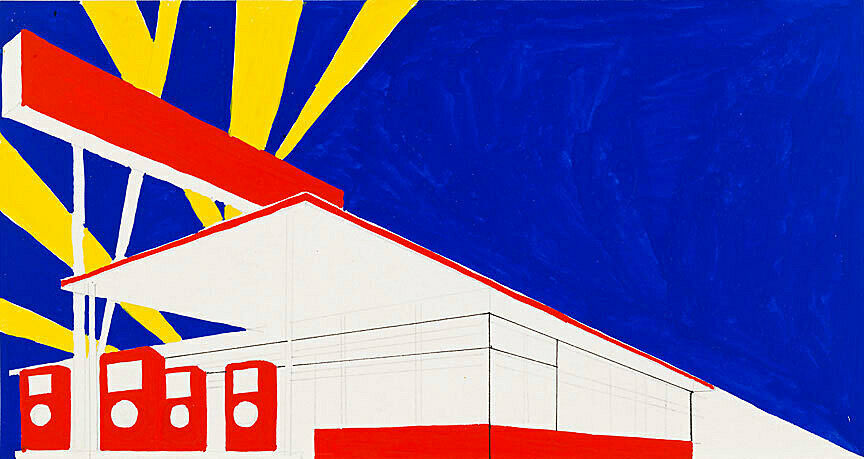
Shaping a Collection: Five Decades of Gifts
July 17–Oct 19, 2014
-
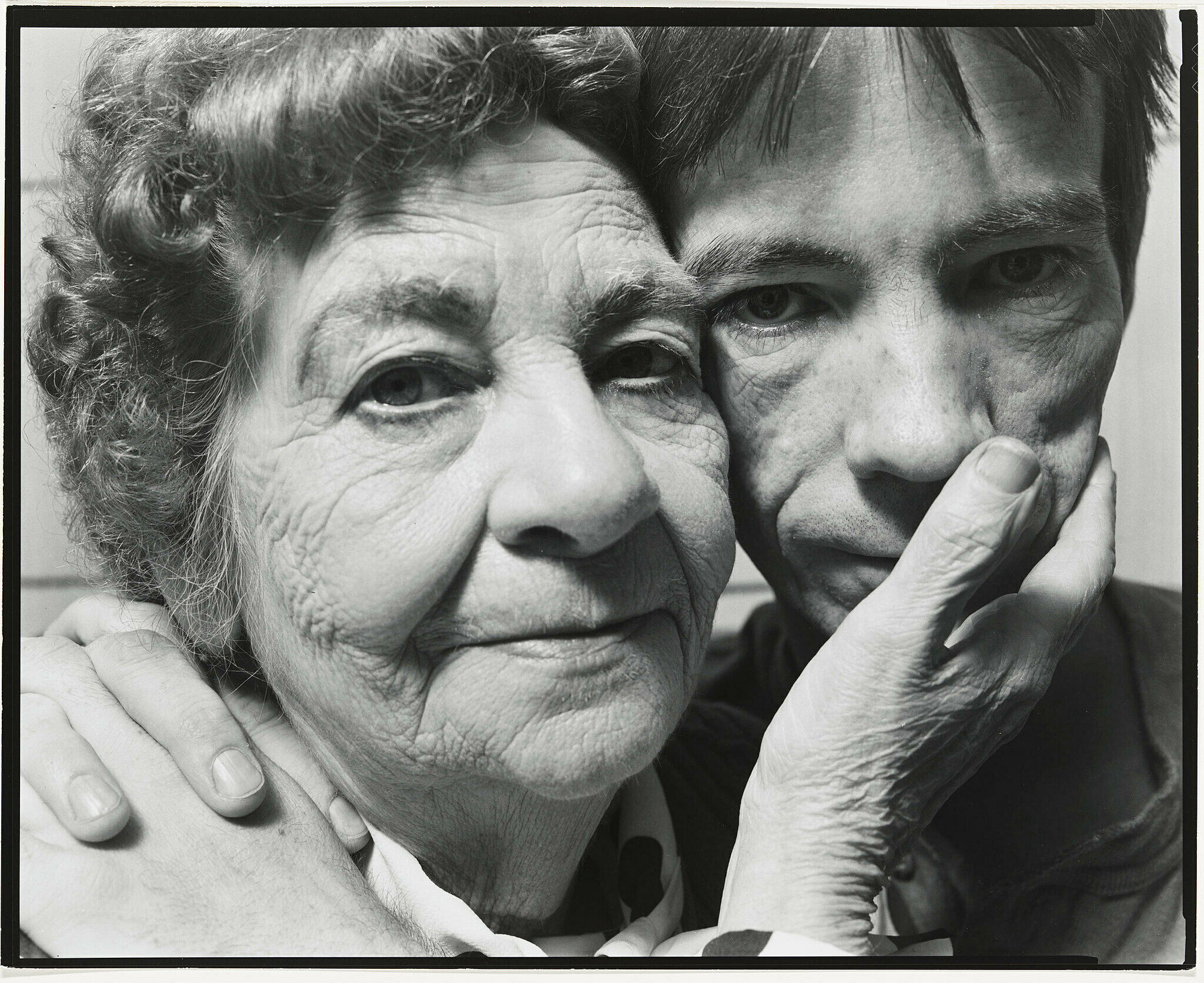
I, YOU, WE
Apr 25–Sept 1, 2013
-
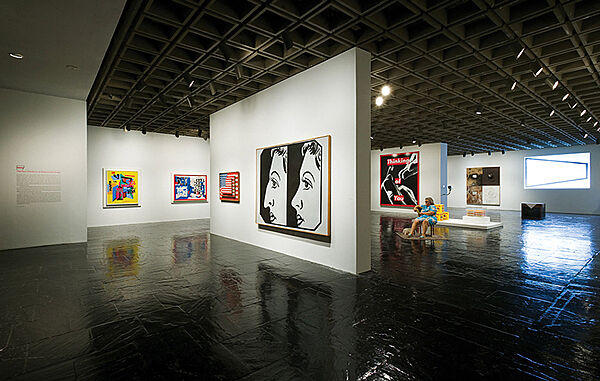
Full House: Views of the Whitney’s Collection at 75
June 29–Sept 3, 2006
Installation photography
-
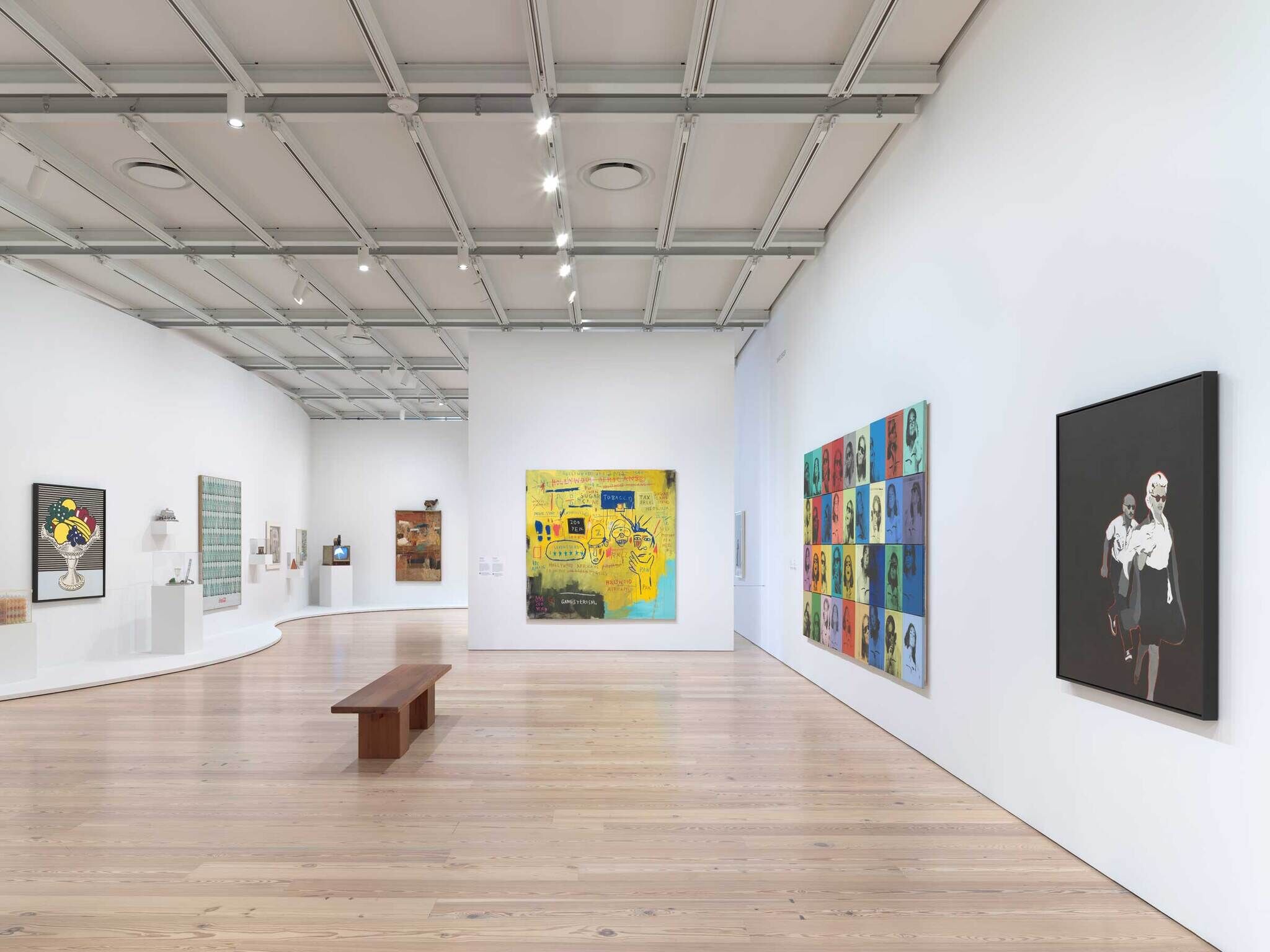

Installation view of “Untitled” (America) (Whitney Museum of American Art, New York, July 5, 2025-). From left to right: Robert Watts, Case of Eggs (with Rainbow Wax Eggs), 1964; Roy Lichtenstein, Still Life with Crystal Bowl, 1972; Jeff Koons, Jim Beam - Passenger Car, 1986; Lucas Samaras, Dinner #15, 1965; Man Ray, New York, 1917/1966; Andy Warhol, Green Coca-Cola Bottles, 1962; Jasper Johns, Painted Bronze, 1960 (cast and painted 1964); Gerald Murphy, Cocktail, 1927; Betye Saar, I’ve Got Rhythm, 1972; Mary Bauermeister, Homage to Marbert Du Breer, 1964; Nam Jun Paik, Magnet TV, 1965; Robert Rauschenberg, Satellite, 1955; Jean-Michel Basquiat, Hollywood Africans, 1983; Andy Warhol, Ethel Scull 36 Times, 1963; Rosalyn Drexler, Marilyn Pursued by Death, 1963. Photograph by Ron Amstutz
From the exhibition “Untitled” (America)
-
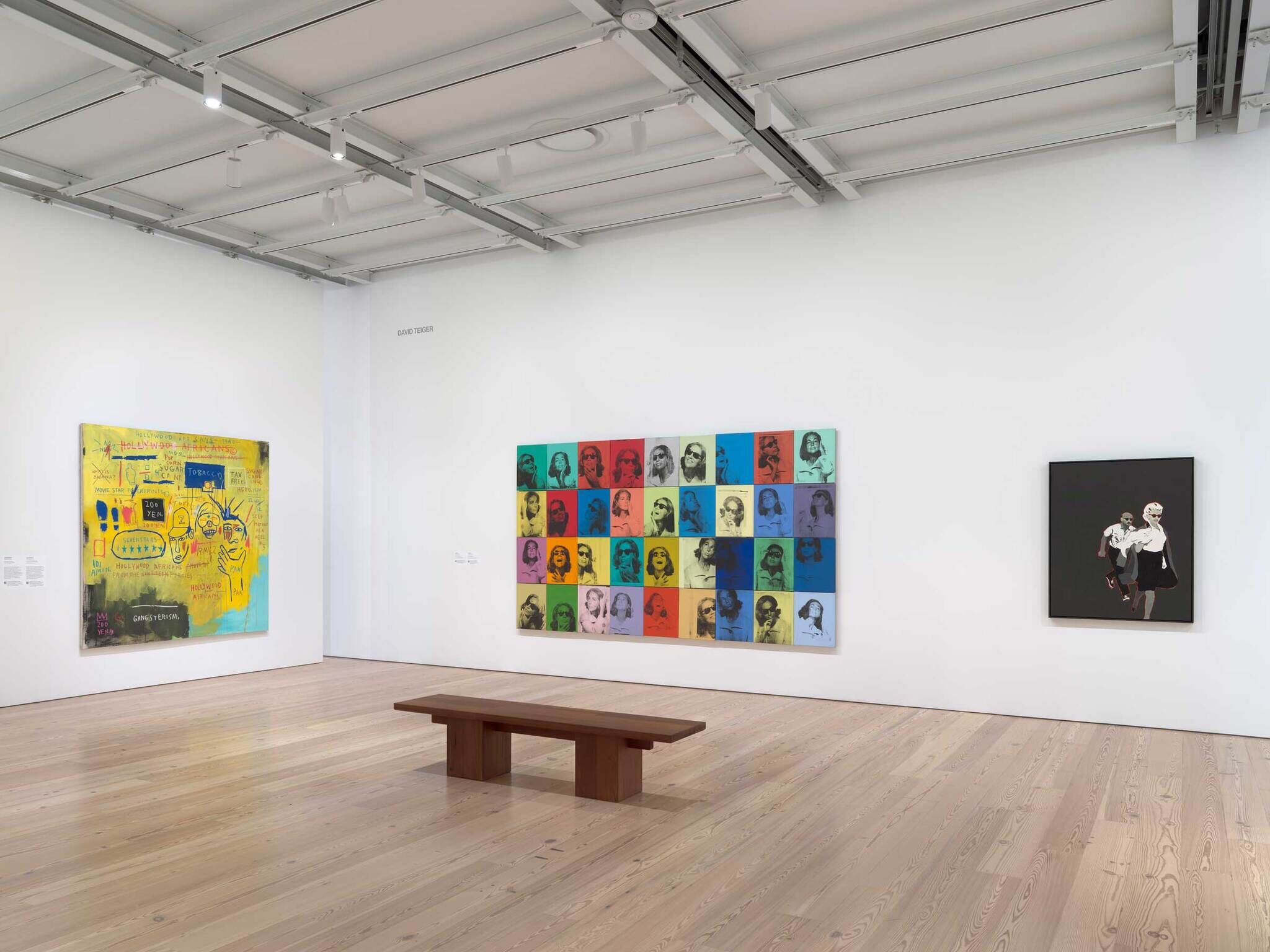

Installation view of “Untitled” (America) (Whitney Museum of American Art, New York, July 5, 2025-). From left to right: Jean-Michel Basquiat, Hollywood Africans, 1983; Andy Warhol, Ethel Scull 36 Times, 1963; Rosalyn Drexler, Marilyn Pursued by Death, 1963. Photograph by Ron Amstutz
From the exhibition “Untitled” (America)
-
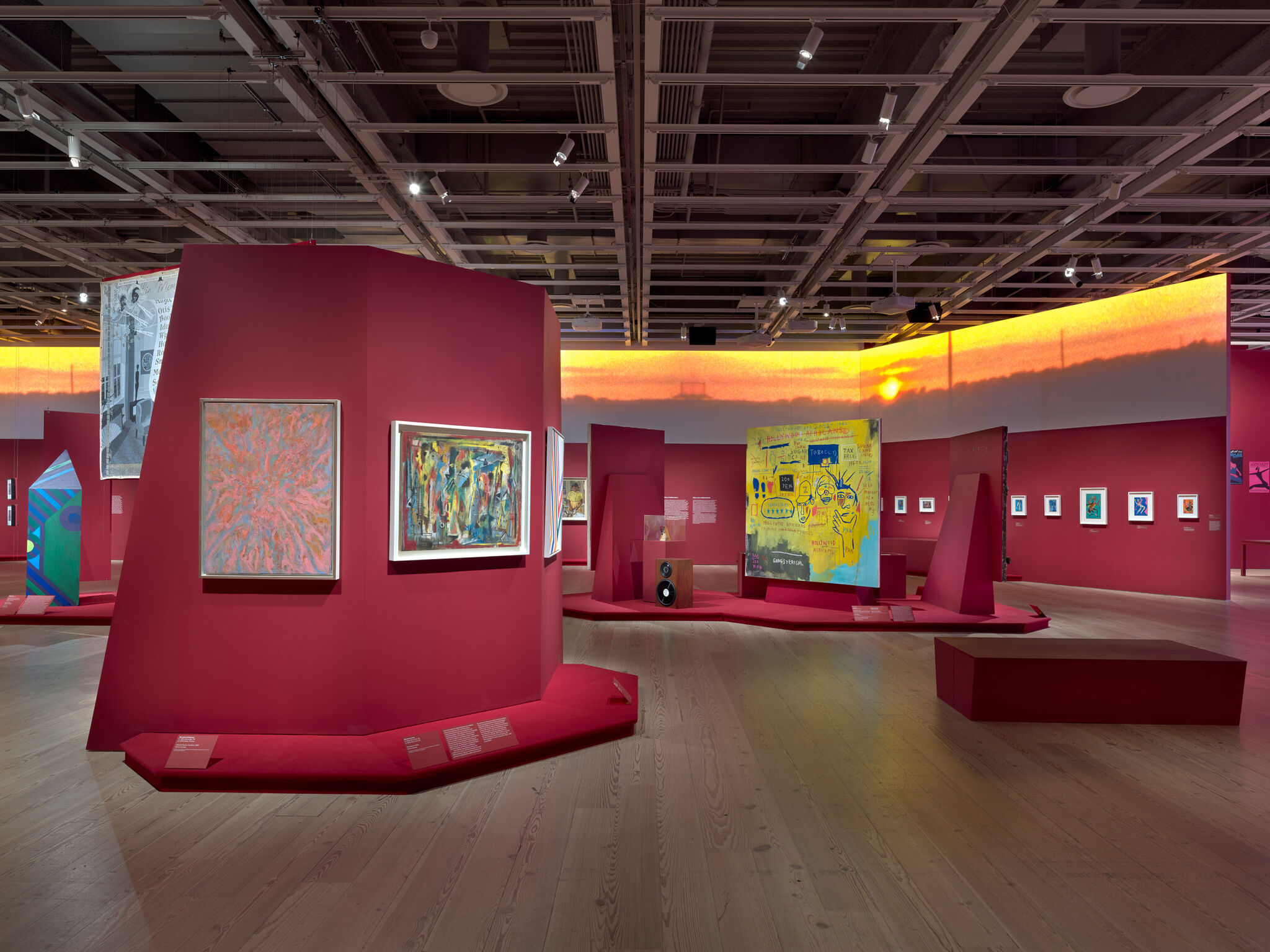

Installation view of Edges of Ailey (Whitney Museum of American Art, New York, September 25, 2024-February 9, 2025). From left to right: Ellsworth Ausby, Untitled, 1970; Kerry James Marshall, Souvenir IV, 1998; Beauford Delaney, Charlie Parker Yardbird, 1958; Norman Lewis, Phantasy II, 1946; Sam Gilliam, Swing 64, 1964; Loïs Mailou Jones, Jennie, 1943; Betye Saar, I’ve Got Rhythm, 1972; Charles Gaines, Sound Box: Nina Simone and Billie Holiday, 2021; Jean-Michel Basquiat, Hollywood Africans, 1983; Romare Bearden, “The Father Comes Home” from the Bayou Fever series, 1979; Romare Bearden, “Wife and Child in Cabin” from the Bayou Feverseries, 1979; Romare Bearden, ”The Swamp Witch” from the Bayou Fever series, 1979; Romare Bearden, “The Blue Demons” from the Bayou Fever series, 1979; Romare Bearden, “The Wart Hog” from the Bayou Fever series, 1979; Romare Bearden, “The Lizard” from the Bayou Feverseries, 1979; Romare Bearden, “The Hatchet Man” from the Bayou Fever series, 1979. Photograph by Ron Amstutz
From the exhibition Edges of Ailey
-
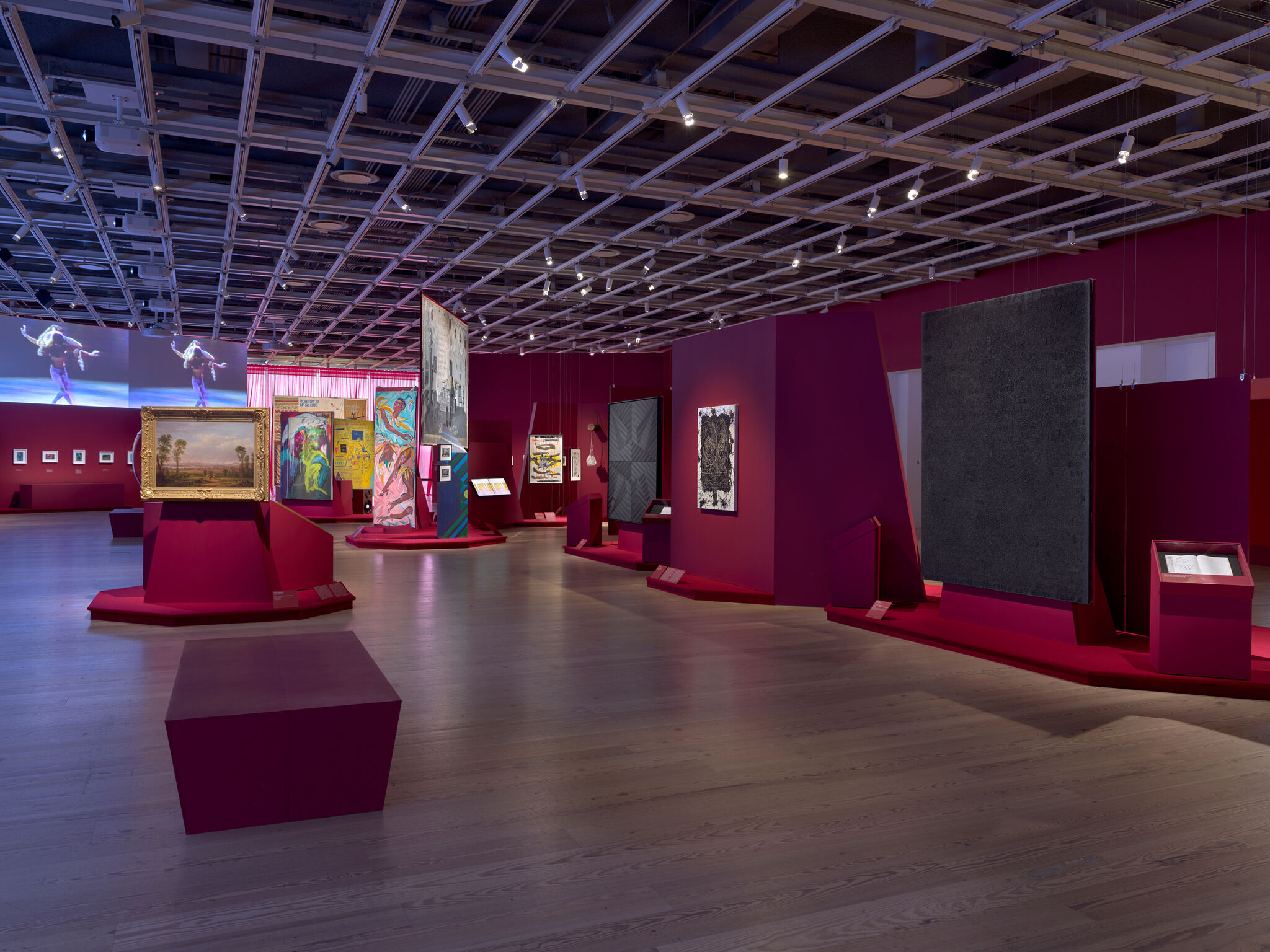

Installation view of Edges of Ailey (Whitney Museum of American Art, New York, September 25, 2024-February 9, 2025). From left to right: Romare Bearden, “The Father Comes Home” from the Bayou Fever series, 1979; Romare Bearden, “Wife and Child in Cabin” from the Bayou Feverseries, 1979; Romare Bearden, “The Herb Woman” from the Bayou Fever series, 1979; Romare Bearden, “The Mother Hears the Train” from the Bayou Fever series, 1979; Robert Duncanson, View of Cincinnati, Ohio from Covington, Kentucky, c. 1851; Mary Lovelace O’Neal, Race Woman Series #7, c. 1990s; Jean-Michel Basquiat, Hollywood Africans, 1983; Emma Amos, Judith Jamison as Josephine Baker, 1985; Kerry James Marshall, Souvenir IV, 1998; Ellsworth Ausby, Untitled, 1970; Lorna Simpson, Momentum, 2011; Kandis Williams, Black Box, 4 points: Horton, Ailey, McKayle contractions and expansions of drama from vernacular –– arms outstretched and entangle, 2021; Jacob Lawrence, Figure Study, c. 1970; Terry Adkins, Other Bloods (from The Principalities), 2012; James Little, Stars and Stripes, 2021; Rashid Johnson, Untitled Anxious Men, 2016; Glenn Ligon, Stranger in the Village #12, 1998. Photograph by Ron Amstutz
From the exhibition Edges of Ailey

